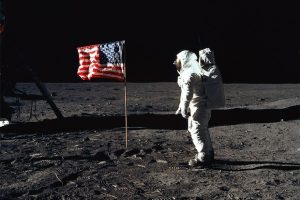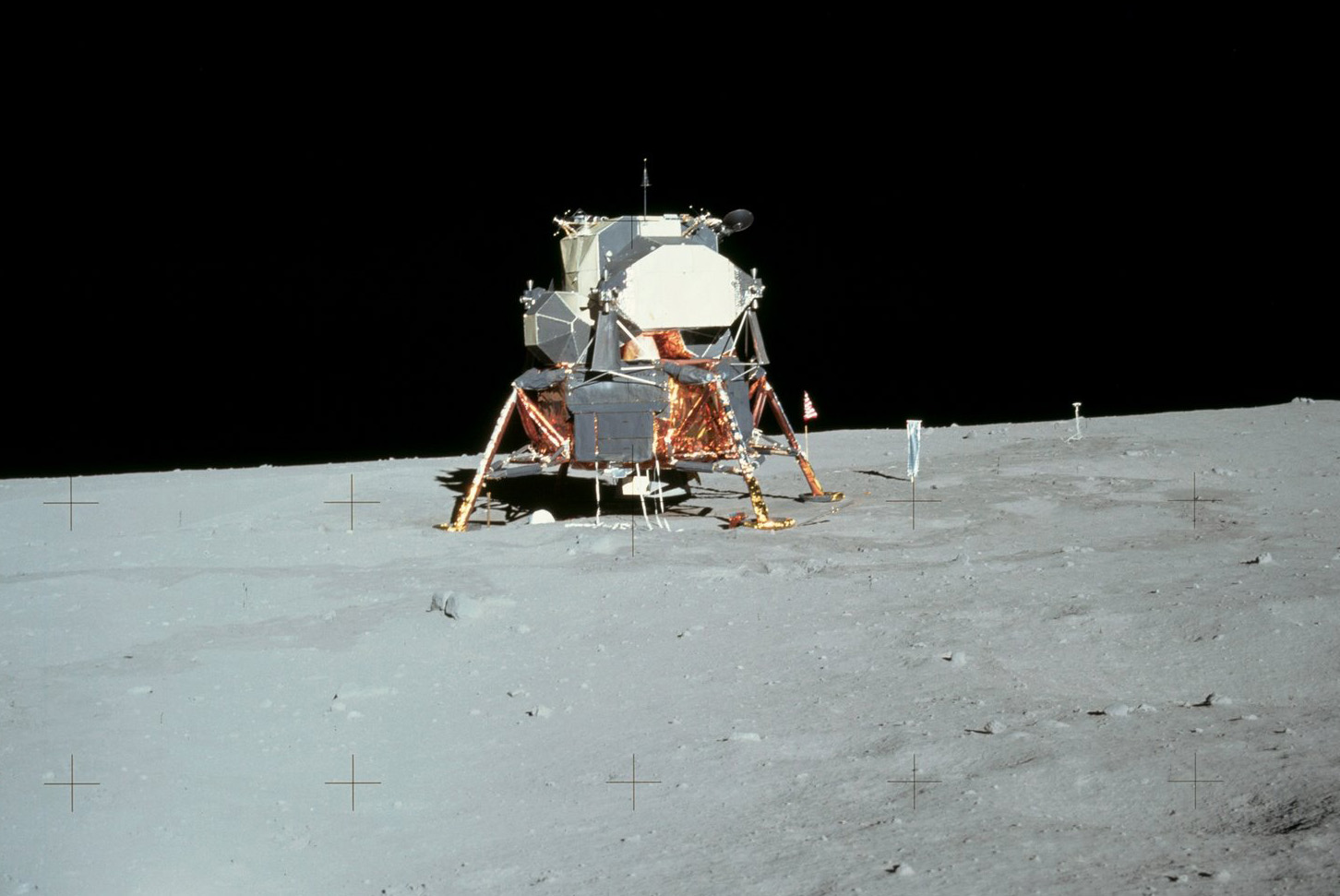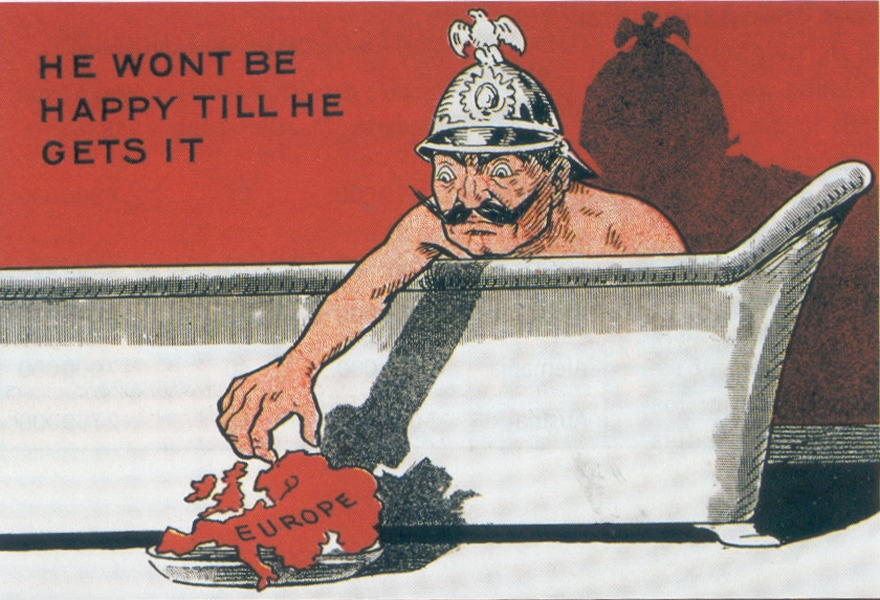To be forced to even think about debunking this question is something of a sad indictment of our current zeitgeist – a world where all truth is subjective, up for debate, a world where there can never be any absolutes because, apparently, most governments and organisations are seeking to subvert our reality. And, if you don’t subscribe to that point of view, you’re at best naive and at worst a government stooge peddling lies to control the masses.
That said, the Moon Landing conspiracy, is one of those theories that seems to persist – so we’ll give it our best shot to explain the most pertinent objections that are often quoted as ‘proof’ that it was all fake, and nothing more than an attempt to humiliate the Russians and hoodwink the world in the cause of American glory.
However, if you are going to ask these questions, then we suggest that you DON’T ask the second man on the moon, Buzz Aldrin. If like professional conspiracist, Bart Sibrel, you did try to suggest to him that his life was a lie then you’ll likely get a punch in the face. He did this to Aldrin in 2002, then aged 72, and the only thing proved was that Aldrin still has an impressive hook.
- Claim #1 : How could computers less powerful than a modern calculator get us to the Moon?
- Claim #2 : Who filmed Armstrong?
- Claim #3 : There are no Stars
- Claim #4 : The Flag Flutters
- Claim #5 : The Lighting Sources are All Wrong
- Claim #6 : There is no blast crater, but there are footprints
- Claim #7 : Radiation would have fried the astronauts
- Claim #8 : You can see the rocks are fake
- Reasons to Believe
 Claim #1 : How could computers less powerful than a modern calculator get us to the Moon?
Claim #1 : How could computers less powerful than a modern calculator get us to the Moon?
 The computer technology and the computer supposedly guiding the mission was less powerful than some modern calculators so how could they even have gotten there let alone landed and taken off again.
The computer technology and the computer supposedly guiding the mission was less powerful than some modern calculators so how could they even have gotten there let alone landed and taken off again.
The Answer
The know how – in the shape of newtonian based physics calculations – was available as long ago as the 19th Century. What wasn’t available was the technology and industrial processes to manufacture the vehicle to deliver a man to the moon.
The Apollo Guidance Computer, or ‘AGC’, that’s the computer we are talking about here had its genesis in around 1962. The computing power needed for ‘flying’ a vehicle like the Apollo spacecraft was not very great. This may be counter intuitive, but it’s true. The only ‘real-time’ component of software that ran in the AGC was called the ‘Digital AutoPilot’ (or ‘DAP’) and this ran only when there were major propulsive maneuvers going on, or when the spacecraft had to be ‘pointed’ in a particular direction. Thus armed with Newtonian physics, a ‘basic’computer, along with various other instrumentation available in the 1960’s, it was perfectly possible to send men to the moon and back again.
 Claim #2 : Who filmed Armstrong?
Claim #2 : Who filmed Armstrong?
Footage of the Apollo 11 landings clearly shows Armstrong leaving the lander. If he was the first man on the moon, who was there to shoot it?
The Answer
This would be quite an astonishing gotcha, if it really was how NASA had accidentally revealed the truth of their hoax. The boring answer is, the lander had an external camera.
 Claim #3 : There are no Stars
Claim #3 : There are no Stars
Why, on a rock with no atmosphere are they not visible? This is, argue conspiracists, is especially convenient for NASA given that the position of the stars would give away that they weren’t on the moon at all.
The Answer
The moon is bright white, stars are dim. This makes capturing them on film very hard. The problem is with photography itself, and balancing different exposures. Although, actually, later Apollo missions did manage to take photographs of stars.
 Claim #4 : The Flag Flutters
Claim #4 : The Flag Flutters
 Flags don’t flutter in a vacuum- but they do in the wind. If there is wind, there is air, and that means you’re not on the moon. You’re in a film studio on Earth. Probably Area 51.
Flags don’t flutter in a vacuum- but they do in the wind. If there is wind, there is air, and that means you’re not on the moon. You’re in a film studio on Earth. Probably Area 51.
The Answer
The flag was held up with a stiffened crossbar, which ran along its top edge. The bottom edge was free though. In the footage, you can clearly see the astronauts twisting it into the ground to plant it. The moon might have no air, but it still obeys the laws of physics – if you shake a flag, the non-rigid bits will flutter. There is, despite the efforts of conspiracists, no footage of the flag flapping without an astronaut holding it or a descent module blasting it.
 Claim #5 : The Lighting Sources are All Wrong
Claim #5 : The Lighting Sources are All Wrong
When astronauts step into the shadows they should be far darker, as the sun is the only source of light.
The Answer
The moon, as anyone who has been out at the right time of the month would know, is a good source of light. If this is true 400,000 kilometres away on the Earth it is certainly true when you are actually standing on the moon. Reflected light would be more than enough to illuminate them .
There is also a phenomenon called “Earth shine” at play here. Much like you get light from the moon reflected on Earth you will also get light reflected FROM the Earth onto the Moon – if you happen to be standing on it that is !
 Claim #6 : There is no blast crater, but there are footprints
Claim #6 : There is no blast crater, but there are footprints
 How can you land a spacecraft on the dusty surface of the moon, and leave its landing area intact- but still have the clear imprint of astronauts’ feet?
How can you land a spacecraft on the dusty surface of the moon, and leave its landing area intact- but still have the clear imprint of astronauts’ feet?
The Answer
Gravity on the moon is a sixth that on Earth so the lander, which by the time it touched down had slowed to walking pace, did not need massive thrust. In any case, there was only a fine layer of dust- which it blew off.
Without an atmosphere, the dust then settled rapidly rather than billowing as it would on Earth. The lack of wind also meant that astronaut footprints stayed crisp and defined.
 Claim #7 : Radiation would have fried the astronauts
Claim #7 : Radiation would have fried the astronauts
The Earth’s magnetic field pulls the solar wind into a ring of radiation known as the Van Alien belts. Passing through these would have given them a lethal dose.
The Answer
Radiation levels are indeed high in the belts. NASA was initially concerned enough that it considered a scheme to blast a temporary hole in the belts using a nuclear weapon. But it was not necessary. The astronauts would spend less than two hours in them during their mission, meaning it is a matter of simple mathematics to see the dose is safe- albeit still higher than you would like. By also providing some insulation though, NASA reduced this further. As a result, the radiation was similar to that from a chest X-ray.
 Claim #8 : You can see the rocks are fake
Claim #8 : You can see the rocks are fake
 One of them, in photographs from Apollo 16, is even labelled with the letter “C”. NASA left the incriminating evidence in plain sight.
One of them, in photographs from Apollo 16, is even labelled with the letter “C”. NASA left the incriminating evidence in plain sight.
The Answer
Boringly, in the original image -from which the famous “C-shot” is merely a crop -the letter is not there. It’s probably a small hair or piece of thread that got in the way in the copying process.
REASONS TO BELIEVE
Above are some of the reasons why the conspiracists are wrong. But there are plenty of positive reasons to believe that, 50 years ago, humans really did achieve one of the greatest technological feats in history…
- Why would the Soviets have played along?
The purpose of the Apollo missions was to beat the Russians to the moon. It is clear why the US government might have been motivated to fake it, but why would the USSR? They were more than capable of tracking the mission- as telescopes in the west, such as at Jodrell Bank, did indeed do. So why stay silent? - There were 400,000 people involved.
At its height, the Apollo missions consumed one dollar in every 25 spent by the US government. They were a vast national project. How do you prevent 400,000 people from talking? - There is evidence on the moon.
The landing sites have been seen – albeit blurrily- by lunar orbiters. Laser reflectors were also left behind, and have since been used to measure the Earth-Moon distance. - There is evidence on Earth.
A lot of lunar rock was brought back by the astronauts. When examined in a laboratory it displays the unmistakeable signs of having been outside the Earth’s atmosphere for billions of years. Are all the scientists still working on analysing these rocks in on the hoax too? - Pulling off the hoax would be harder than pulling off the reality.
Footage from the moon shows astronauts bounding in low gravity, and dust kicked up then moving as if in a vacuum. On Apollo 15 an astronaut memorably dropped a feather and hammer together. They hit the ground at the same time, as Galileo predicted they would without atmosphere. They also moved slower than they would have in Earth’s gravity. If the landings really were hoaxed, they were a technological achievement more impressive than going to the Moon. Ironically, only today do we have the CGI technology to make such a convincing spoof.





